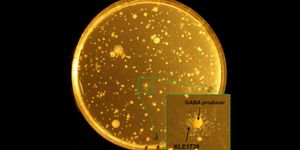Proposed SPHEREx Mission Receives NASA's Blessing, Launching by 2023
The universe is a gigantic place, and while there’s still much we don’t know about it, that hasn’t stopped NASA from making strides in exploring its depths in the name of science. The American space agency’s latest plan is to move forward with a new mission called the called Spectro-Photometer for the History of the Universe, Epoch of Reionization and Ices Explorer (SPHEREx), an initiative that would push our understanding the universe even farther.
Image Credit: Caltech
“I’m really excited about this new mission,” explained NASA’s acting Administrator Jim Bridenstine in regards to the announcement. “Not only does it expand the United States’ powerful fleet of space-based missions dedicated to uncovering the mysteries of the universe, it is a critical part of a balanced science program that includes missions of various sizes.”
Related: NASA's Chandra X-ray Observatory is now back up and running after some technical difficulties
According to one of NASA’s public statements on the matter, SPHEREx would survey the entire sky in both optical and near-infrared light to try and grasp a better idea of what’s out there. Furthermore, the SPHEREx mission would combine tried and true technologies from both Earth-orbiting satellites and Mars-centric spacecraft to map out the universe in 96 color bands. This data would augment our ever-expanding database of known stars and galaxies, among other things.
"This amazing mission will be a treasure trove of unique data for astronomers,” added Thomas Zurbuchen of NASA’s Science Mission Directorate. “It will deliver an unprecedented galactic map containing ‘fingerprints’ from the first moments in the universe’s history. And we’ll have new clues to one of the greatest mysteries in science: What made the universe expand so quickly less than a nanosecond after the big bang?”
Related: NASA fixes the Hubble Space Telescope's gyroscope issues, officially brings it back online
NASA says the SPHEREx mission is slated to launch by 2023, after which it will spend two years congregating information about the universe in unprecedented detail. This information would comprise of data about stellar systems right here in the Milky Way in addition to that of galaxies residing far away from our own. SPHEREx’s near-infrared capabilities make it ideal for sniffing out the building blocks of life, such as water and other organic molecules.
It’s worth noting that the SPHEREx mission won’t directly analyze points of interest, but instead draw astronomers’ attention to them. It will be up to much larger observatories, such as NASA’s upcoming James Webb Space Telescope, to conduct detailed analytics concerning said points of interest, a task that the observatory’s state-of-the-air infrared optics should see no challenge in doing.
While it remains to be seen what SPHEREx might discover when it finally launches, it should indeed be interesting to learn what it will contribute to science. After all, humans have been searching for potentially-habitable words outside of our solar system for eons.
Source: NASA










